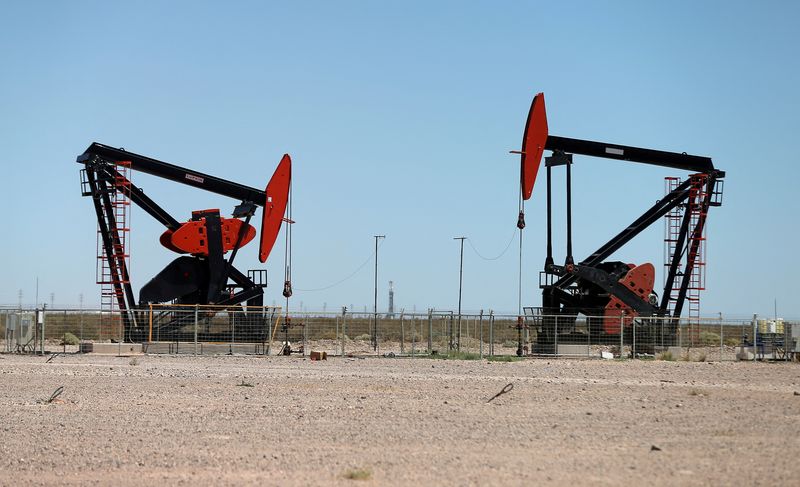Commodities
Oil settles up, biggest weekly gains in over a year on Middle East war risk

By Shariq Khan
NEW YORK (Reuters) -Oil prices rose on Friday and settled with their biggest weekly gains in over a year on the mounting threat of a region-wide war in the Middle East, although gains were limited as U.S. President Joe Biden discouraged Israel from targeting Iranian oil facilities.
futures rose 43 cents, or 0.6%, to settle at $78.05 per barrel, while U.S. West Texas Intermediate crude futures gained 67 cents, or 0.9%, to close at $74.38 per barrel.
Israel has sworn to strike Iran for launching a barrage of missiles at Israel on Tuesday after Israel assassinated the leader of Iran-backed Hezbollah a week ago. The events had oil analysts warning clients of the potential ramifications of a broader war in the Middle East.
Oil prices jumped nearly 2% during the session but pulled back sharply after Biden said that if he were in Israel’s shoes he would consider alternatives to striking Iranian oil fields.
On Thursday, oil benchmarks surged over 5% after Biden confirmed the U.S. was in talks with Israel over whether it would support a strike on Iranian energy infrastrucutre.
On a weekly basis, Brent crude gained over 8%, the most in a week since January 2023. WTI gained 9.1% week-over-week, the most since March 2023.
An attack on Iranian energy facilities would not be Israel’s preferred course of action, JPMorgan commodities analysts wrote on Friday. Still, low levels of global oil inventories suggest that prices are set to be elevated until the conflict is resolved, they added.
Citing data from ship-tracking service Kpler, they said that inventories are below last year’s levels when Brent was trading at $92 and at 4.4 billion barrels are the lowest on record.
Brokerage StoneX forecasts oil prices could jump between $3 and $5 per barrel if Iranian oil infrastructure is targeted.
On Friday, Iran’s Supreme Leader Ayatollah Ali Khamenei appeared in public for the first time since his country launched the missile attack. He called for more anti-Israel struggle.
Iran will target Israeli energy and gas installations if Israel attacks it, the semi-official Iranian news agency SNN quoted Revolutionary Guards deputy commander Ali Fadavi as saying.

Iran is a member of OPEC+ with production of around 3.2 million barrels per day or 3% of global output. The group’s spare production capacity should allow other members to boost output if Iranian supplies are disrupted, limiting oil price gains, Rystad analysts said on Thursday.
Supply fears have also eased in Libya. The country’s eastern-based government and Tripoli-based National Oil Corp on Thursday said all oilfields and export terminals were being reopened after a dispute over leadership of the central bank was resolved.
Commodities
Oil prices rise; U.S. crude inventories plunge, Russia-Ukraine truce eyed
Commodities
India’s Reliance to stop buying Venezuelan oil over US tariffs, sources say
Commodities
Oil prices climb on Venezuela supply worries

 Forex3 years ago
Forex3 years agoForex Today: the dollar is gaining strength amid gloomy sentiment at the start of the Fed’s week

 Forex3 years ago
Forex3 years agoUnbiased review of Pocket Option broker

 Forex3 years ago
Forex3 years agoDollar to pound sterling exchange rate today: Pound plummeted to its lowest since 1985

 Forex3 years ago
Forex3 years agoHow is the Australian dollar doing today?

 Cryptocurrency3 years ago
Cryptocurrency3 years agoWhat happened in the crypto market – current events today

 World3 years ago
World3 years agoWhy are modern video games an art form?

 Commodities3 years ago
Commodities3 years agoCopper continues to fall in price on expectations of lower demand in China

 Economy3 years ago
Economy3 years agoCrude oil tankers double in price due to EU anti-Russian sanctions























